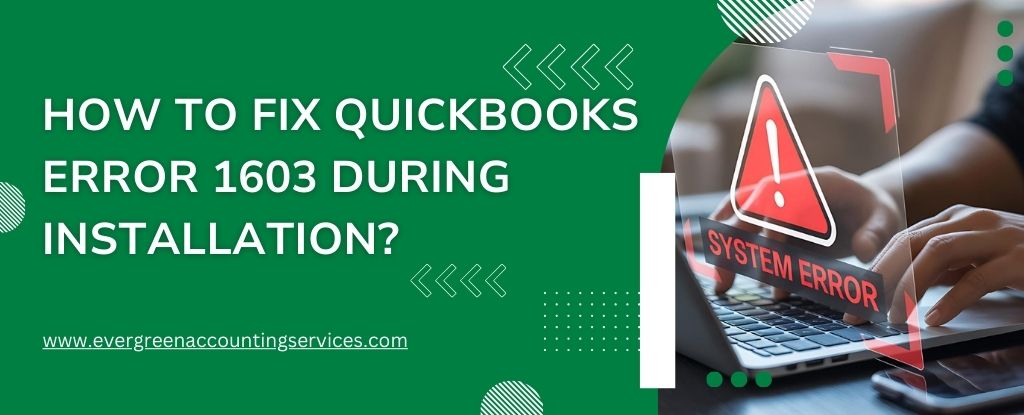Table of Contents
ToggleMoving QuickBooks Desktop to a new computer can feel overwhelming—especially when you’re concerned about keeping your company data safe and ensuring the software runs smoothly. Whether you’re using the latest QuickBooks Desktop versions or managing multiple company files, following the correct process is essential for a seamless transfer. This comprehensive guide explains how to move QuickBooks Desktop to another computer using the Migrator Tool or how to manually reinstall the software on another device.
Understanding the QuickBooks Desktop Migrator Tool
If you’re a single-user running QuickBooks Desktop (US version, 2018 or newer), the QuickBooks Migrator Tool offers the easiest way to move your software and up to three company files to another computer. This automated tool transfers essential program files and settings so you can quickly set up QuickBooks on your new device.
Important Compatibility Note
QuickBooks Desktop 64-bit versions can only be transferred between two 64-bit Windows systems. If your USB includes files from QuickBooks Desktop 2022 or 2023 and you attempt to run the tool on a 32-bit system, the migration process may stop unexpectedly.
What the QuickBooks Migrator Tool Transfers?
The Migrator Tool copies all the information needed to install and run QuickBooks Desktop on the new computer, including:
- Complete QuickBooks Desktop version details
- Up to the last three recently opened company files
- Custom templates, forms, and letters
- Scheduled and memorized reports
- Local attachments
- Printer settings (PrintEng.ini, wpr.ini, QBPrint.qbp)
- Spell checker files
- Financial Statement Designer (client and data files)
- Cash Flow Projector (.cfp)
- Business Planner (.bpw)
- Loan Manager (.lmr)
- Statement Writer (QuickBooks Accountant)
- Advanced Reports (QuickBooks Enterprise)
What the Migrator Tool Does Not Transfer?
Certain settings and data require manual setup due to security and multi-user restrictions:
- Multi-user configurations
- Payroll and payment service credentials
- Company files not opened recently
- Manual backup files
- Intuit Data Protect—must be uninstalled from the old computer and manually installed on the new one
Requirements Before Moving QuickBooks Desktop to New Computer
Before you start the process of moving or reinstalling QuickBooks Desktop, there are a few preliminary steps to ensure the transition is seamless. These steps involve preparing both your current and new computer, backing up your company files, and ensuring you have the necessary installation files and licenses.
Before starting your migration, make sure you have:
- Admin access in QuickBooks Desktop
- A new computer connected to the internet
- QuickBooks Desktop 2018 or later (US version)
- Windows 10 or newer, fully updated
- A USB flash drive with 150–250 MB of free space
- Your QuickBooks Desktop license and product number
These details can be found in your Intuit Account or original purchase email.
Backup Your QuickBooks Data
The most important step in any relocation or reinstallation process is ensuring that your data is safe. QuickBooks provides a built-in backup feature that allows you to save your company files to an external storage device, cloud storage, or other backup methods. This will prevent data loss and make the restoration process on your new computer much smoother.
- Open QuickBooks on your old computer.
- Click on File and select Back Up.
- Follow the prompts to create a backup file (.QBB), which will store all your financial data.
- Save this file to an external drive or cloud storage.
Verify Your QuickBooks License and Product Number
Ensure that you have the correct license and product number for your QuickBooks Desktop version. You will need this information to activate QuickBooks on the new computer.
- Go to Help in the QuickBooks menu.
- Select About QuickBooks.
- Note down your license and product number, as you will need them during the installation process.
How to Transfer QuickBooks Desktop Using the Migrator Tool?
Follow these steps to move QuickBooks Desktop to a new computer and your company files safely:
1. Prepare QuickBooks on the Old Computer
- Open QuickBooks Desktop
- Go to File > Utilities > Move QuickBooks to another computer
- Select I’m Ready
- Create a one-time password
2. Copy the Files to Your USB Drive
Follow the prompts to select your USB device. QuickBooks automatically copies the necessary program files and data.
3. Run the Migrator Tool on the New Computer
- Insert your USB drive
- Open the USB folder and double-click Move_QuickBooks.bat
- Enter the one-time password
- Select Let’s go
The time needed will vary based on file size, system performance, and internet speed.
Important Reminder
The Migrator Tool removes the transferred files from the USB once the process finishes. Your original files remain on your old computer—renaming them is recommended to avoid confusion.
How to Manually Move or Reinstall QuickBooks Desktop (Without the Migrator Tool)?
If you cannot use the Migrator Tool, you can manually reinstall QuickBooks on the new computer.
Step 1: Locate Your Product and License Information
Keep this information ready before reinstalling.
Step 2: Uninstall QuickBooks from the Old Computer (Optional)
This step is necessary if you’re reinstalling rather than transferring.
Step 3: Install QuickBooks on the New Computer
- Download QuickBooks Desktop from your Intuit account, or
- Insert the installation CD
- Follow the on-screen instructions to complete setup
After Migration: What to Verify on Your New Computer
Once QuickBooks Desktop is installed:
- Open your company file(s)
- Confirm that all data and custom settings transferred successfully
- Log back into payroll, banking, and payment services
- Reinstall and configure Intuit Data Protect
- Copy any additional company files not included in the migration
- Set up your backup schedule on the new computer
If you no longer need QuickBooks on your old device, you can uninstall it.
Conclusion
Moving or reinstalling QuickBooks Desktop to another computer doesn’t have to be a complicated process. By following the steps outlined in this guide, you can transfer your QuickBooks data seamlessly to a new system, ensuring that your business continues to run smoothly. Always remember to back up your data, deactivate the license on the old computer, and follow the installation and restoration steps carefully to ensure a successful transition.
By staying proactive and taking necessary precautions, you’ll be able to continue managing your financial data without interruption, even after moving or reinstalling QuickBooks Desktop.
Frequently Asked Questions
To move QuickBooks to a new hard drive, follow these steps:
1. Backup Your QuickBooks Data: Ensure your QuickBooks company files are backed up on an external drive or cloud storage.
2. Install QuickBooks on the New Hard Drive: Download the QuickBooks installation files from the official QuickBooks website or use your original installation disc.
3. Restore Backup: After installing QuickBooks, restore the backup file that you saved from your old hard drive to the new hard drive.
4. Reactivation: Reactivate QuickBooks using your product and license numbers on the new installation.
Yes, you can install QuickBooks Desktop on two computers, but there are certain conditions:
1. License Limits: A single QuickBooks Desktop license typically allows installation on one computer. However, if you have a multi-user license, you can install QuickBooks on multiple computers within your network.
2. Deactivation and Activation: If you want to install QuickBooks on a second computer, you must deactivate it on the first computer before activating it on the second one. You can only have QuickBooks activated on one computer at a time unless you purchase a multi-user license.
To restore a QuickBooks backup to a new computer:
1. Install QuickBooks: Ensure QuickBooks is installed on your new computer.
2. Open QuickBooks: Launch QuickBooks on the new computer.
3. Restore Backup: Go to File > Open or Restore Company > Restore a backup copy. Choose Next, then select the location where your backup file (.QBB) is saved, such as an external hard drive or cloud storage.
4. Follow the Prompts: Complete the restoration process by following the on-screen instructions.
To access QuickBooks Desktop from another computer, there are a few options:
1. QuickBooks Desktop with Remote Access: If you have QuickBooks Desktop Pro Plus or higher, you can use QuickBooks’ remote access feature to access your company file from anywhere.
2. Using a Remote Desktop Application: If you don’t have QuickBooks’ remote access, you can use remote desktop software (such as Remote Desktop, AnyDesk, or TeamViewer) to access your original computer from another computer.
3. Hosting QuickBooks on the Cloud: Another option is to host QuickBooks Desktop on a cloud server, which allows you to access it from any computer with an internet connection.
To move or reinstall QuickBooks Desktop 2021 to another computer:
1. Backup Your QuickBooks Data: Ensure that you back up your QuickBooks company file.
2. Uninstall QuickBooks from the Old Computer: Deactivate the license and uninstall QuickBooks from your old computer through the Control Panel.
3. Install QuickBooks on the New Computer: Download and install QuickBooks Desktop 2021 on the new computer.
4. Restore Your Backup: After installation, restore the backup company file to the new computer using File > Open or Restore Company.
5. Reactivate QuickBooks: Enter your license and product number to activate QuickBooks on the new computer.
To install QuickBooks on a new computer without a disk:
1. Download QuickBooks: Go to the QuickBooks Downloads & Updates page and download the version of QuickBooks you need.
2. Run the Installation: Open the downloaded file and follow the on-screen instructions to install QuickBooks.
3. Activate QuickBooks: Enter your QuickBooks license and product number during the installation process to activate the software.
If the “Move QuickBooks to Another Computer” option is greyed out, it could be due to one of the following reasons:
1. Administrator Permissions: Ensure you have the necessary administrative rights on both computers.
2. Licensing Issues: QuickBooks can only be moved to another computer if it is properly deactivated on the original computer.
3. Active QuickBooks Version: If QuickBooks is currently open on the old computer, the option to move it might be disabled. Ensure QuickBooks is closed before attempting to move it.
4. Multiple Installations: If you already have QuickBooks installed on the new computer, it may prevent the move. Try uninstalling QuickBooks on the new computer and reattempt the move.
To install QuickBooks on a new computer:
1. Download QuickBooks: Visit the QuickBooks website and download the latest version of QuickBooks Desktop.
2. Run the Installer: Open the downloaded installer and follow the on-screen instructions.
3. Enter License and Product Numbers: During the installation process, enter your QuickBooks license and product numbers.
4. Complete Installation: After installation, you can restore your company file by selecting File > Open or Restore Company > Restore a backup copy.
To transfer QuickBooks Desktop to QuickBooks Online:
1. Sign Up for QuickBooks Online: Create a QuickBooks Online account if you haven’t already.
2. Export Your Data: From your QuickBooks Desktop, go to Company > Export Company File to QuickBooks Online. Follow the prompts to sign in to your QuickBooks Online account and choose which company file to transfer.
3. Complete the Transfer: QuickBooks will guide you through the process of uploading your Desktop data to QuickBooks Online. Once completed, your data will be available online.



